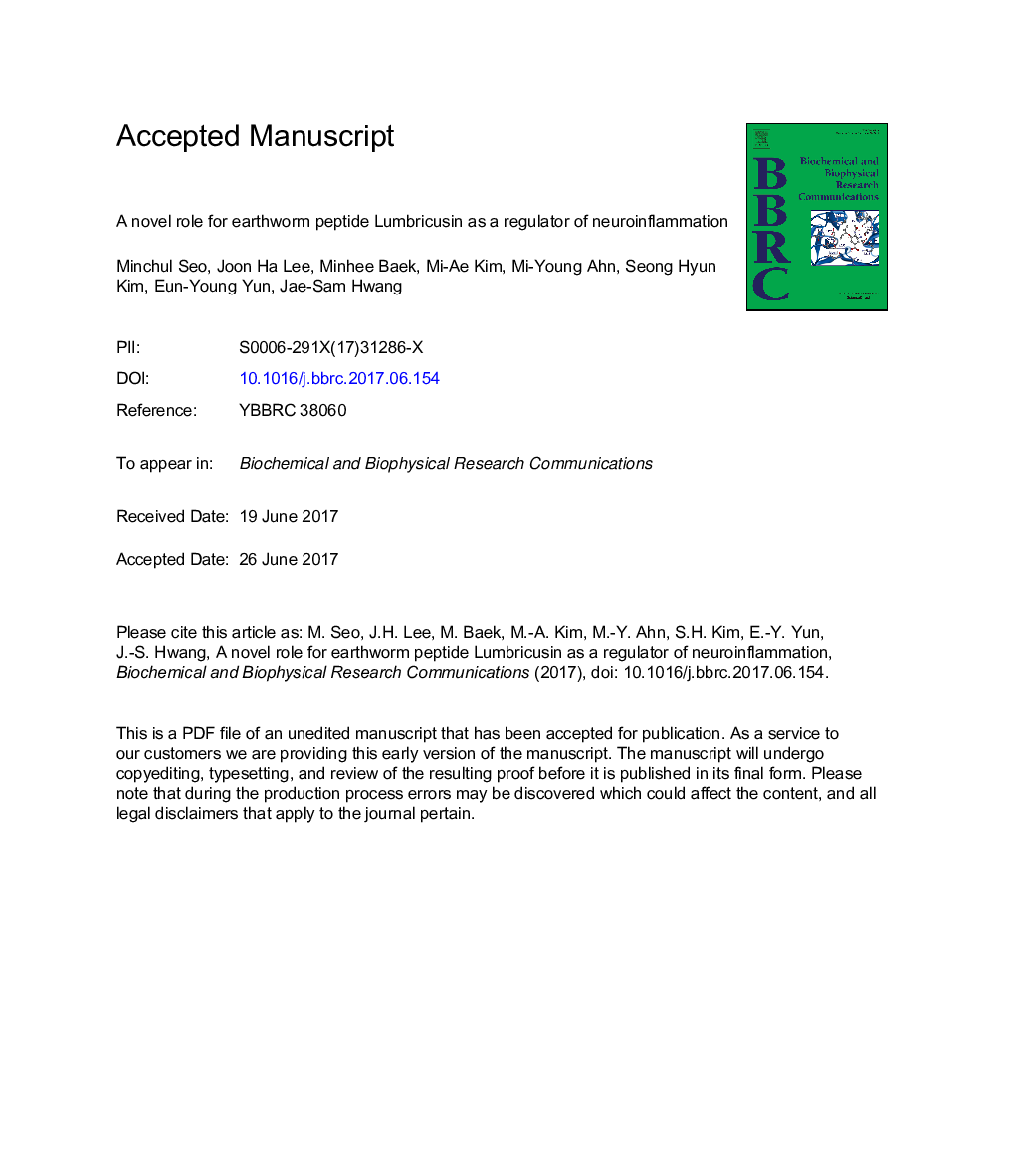| Article ID | Journal | Published Year | Pages | File Type |
|---|---|---|---|---|
| 5505154 | Biochemical and Biophysical Research Communications | 2017 | 28 Pages |
Abstract
Recently, we reported that Lumbricusin, an antimicrobial peptide isolated from earthworm Lumbricus terrestris, enhanced neuronal proliferation and ameliorated motor dysfunction and dopaminergic neurodegeneration. Accumulating evidence suggests that neurodegeneration is the primary pathological feature of acute or chronic inflammation mediated by microglia, the resident macrophage of the central nervous system. Therefore, microglial activation inhibitors may be useful as therapeutic agents for neurodegenerative diseases. To determine whether Lumbricusin ameliorates neuroinflammation through inhibition of microglial activation by lipopolysaccharides (LPS), we newly synthesized 9-mer Lumbricusin analogues based on the amino acid sequence of Lumbricusin. One of these, Lumbricusin Analogue 5 (LumA5; QLICWRRFR-NH2), markedly reduced expression of enzymes (COX-2, iNOS), cytokines (IL-6, IL-1β, TNF-α), and signal transduction factors (AKT, MAPKs, NF-κB) involved in inflammation triggered by LPS in vitro and in vivo. In addition, LumA5 inhibited the cytotoxicity of conditioned medium prepared by LPS-activated BV-2 microglia to neuronal SH-SY5Y cells and improved cell viability. These results indicate that LumA5 may be a potential therapeutic agent for the treatment of various neuroinflammatory conditions.
Related Topics
Life Sciences
Biochemistry, Genetics and Molecular Biology
Biochemistry
Authors
Minchul Seo, Joon Ha Lee, Minhee Baek, Mi-Ae Kim, Mi-Young Ahn, Seong Hyun Kim, Eun-Young Yun, Jae-Sam Hwang,
